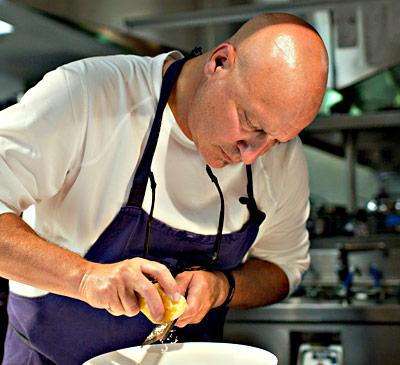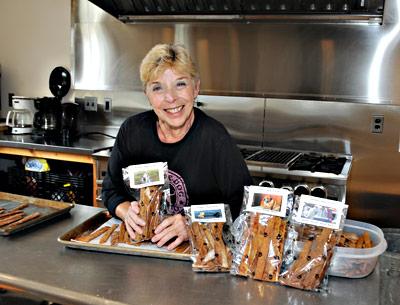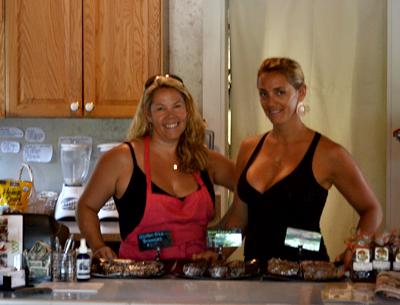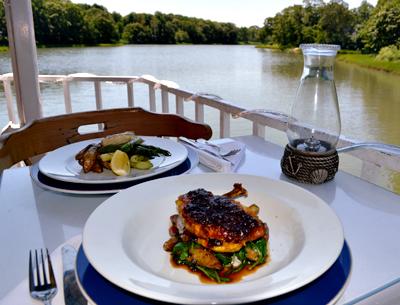Seasons by the Sea: The Swordfish Returned
Seasons by the Sea: The Swordfish Returned
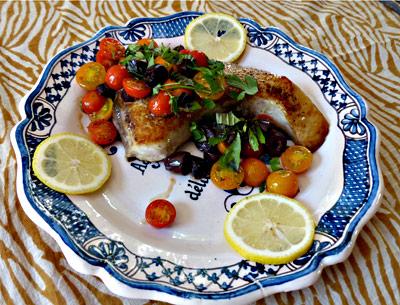
Swordfish are found around the world in tropical, temperate, and sometimes cold waters of the Atlantic, Indian, and Pacific Oceans. North Atlantic swordfish annually migrate thousands of miles along the eastern seaboard of the United States and Canada. They are one of the fastest and largest predators in the ocean, capable of swimming up to 50 miles per hour, thanks to their beautifully streamlined bodies.
We seldom get to see a whole swordfish, as they grow an average of 50 to 200 pounds and are usually sold in wheels, then cut into steaks and loins. They can reach 15 feet long with swords as long as 5 feet, and can live about nine years.
Swordfish is a tasty, meaty fish. Moderately oily, it is an excellent source of selenium, niacin, vitamin B12, and zinc. It may, however, contain enough methylmercury that nursing mothers, pregnant women, and young children should not eat it. Thorough cooking (but not overcooking) is also essential.
The flesh of swordfish is usually pale pinky-white with colored bands of blue or deep purple, which you should cut out before cooking. Occasionally, when the swordfish are feeding on more squid and shrimp, their flesh turns slightly orange, these are called “pumpkin” swordfish and are particularly delicious, according to my friend Mike of Amagansett Seafood. Look for them in the fall!
You should choose swordfish steaks with firm flesh and no raggedy edges. Some people believe they should be at least one-inch thick, but I find thin steaks just as easy to cook, as long as you are careful to not overcook. Beware of dull, discolored skin; this is a sign of poor handling. If there are signs of browning (called “burning”) this means the fish struggled when caught and got overheated. I don’t think there is any reason to suspect fish markets of trying to sell you cheaper shark steaks instead of sword, like “in the old days,” but take a good look at the swordfish slices to detect their distinctive, symmetrical whorl pattern.
Do you recall the swordfish shortage in the late 1990s? The population was only 58 percent of what it should have been, and the method of catching the swordfish, pelagic longlines, was also accidentally capturing sea turtles. With cooperation between fishermen, managers, and scientists, undersize swordfish were allowed to grow and the catch limits were reduced. After 10 years and much sacrifice on the part of Atlantic swordfishermen, the population is now robust.
Now it is time for me to confess that I run rather hot and cold on swordfish, the way I do on salmon. Sometimes I crave it, sometimes I’m like, blech. Is it the texture, which can range from deliciously meaty, flavorful, and moist to mealy, dry, or gelatinous? Or is it the fact that swordfish can have worms in their belly meat? Well, that’s why you must cook it thoroughly, no Xiphias gladius sushi for you! As for preparation, I like the simpler, Mediterranean style of cooking, a quick sear or grilling followed by a zesty, acidic addition like lemon juice, herbs, perhaps some chopped black olives and tomatoes. It is also wonderful baked and as kebabs. Don’t try to deep-fry it; this will end in tears. Caribbean salsas with mango or pineapple with chopped jalapenos are a great topper.
Swordfish are not schooling fish. They travel in loose groups, keeping their distance from each other. Except when young, they have no predators other than man and the occasional killer whale. They are vigorous, powerful fighters and use their sharp bills to slash prey. Since they lose their teeth at a young age, they swallow other fish whole (or moderately sliced and diced from their swords). Females grow to be larger than males and are capable of carrying from 1 million to 29 million eggs. Baby swordfish look completely different from adults. They are snakelike, scaly, and have teeth. Swordfish enjoy basking on the surface of the ocean and can sometimes be observed breaching in an attempt to rid themselves of pesky hangers on like lampreys. Ew. They also have an interesting bodily feature that warms their brains and eyeballs for deeper, coldwater swimming.
This is a good time of year to enjoy swordfish, let’s start with a recipe I just made up out of the blue the other day.
Click for recipes

